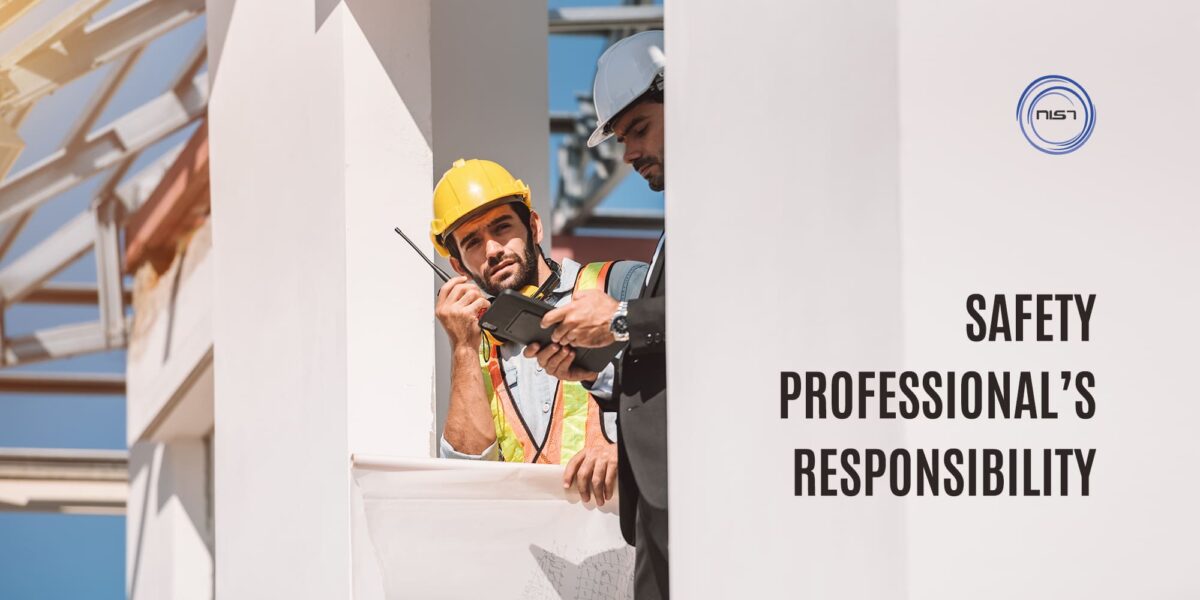Safety professional’s responsibility

| A safety professional is responsible for the safety of an organization’s workers, volunteers, and visitors. Safety professionals must have the knowledge, skills, abilities, experience, and education to help the organization achieve the goals of safety in accordance with legislation, industry standards, and company policies. Organizations use safety professionals to develop, implement, document, and maintain practices and procedures in a manner that protects people, plants, property, and the environment from hazards, as well as to promote continuous improvements in the practices and procedures. The most effective safety professionals are knowledgeable, skilled, reliable, ethical, and have the self-discipline and integrity to promote a culture of safety. A safety professional’s responsibility is to see that safety is maintained or improved and to see that rules are followed, he or she can be responsible for any injuries which occur as a result of not adhering to safety rules, etc. A safety professional is responsible for the safety of the firm and its employees. Safety professionals should be responsible for ensuring that even dangerous products are safe for everyone to use. A safety professional can make sure that there are no working conditions that are unsafe for the public. In addition, safety professionals should be responsible for making sure that all of the workers are safe. Safety professionals are responsible for helping people who are studying in the field of safety. A safety professional should be able to make sure that the learners in the field of safety know what they should do to minimize injuries and errors. He or she should also make sure that they know how to use the machines safely. Finally, a safety professional should be responsible for making sure that people who want to use a machine or tool are able to. This means that he or she should make sure that they have the proper knowledge to use the machines, tools, and equipment safely. A safety professional is responsible for helping students in the field of safety. He or she should make sure that all the learners in the field of safety are safe, as well as have the knowledge to use the machines safely. Safety is the process of reducing the chances of an accident happening, and this involves the whole community. In fact, a safety professional is responsible for working towards the goal of ensuring that people are safe from all dangers. A safety professional is responsible for making sure that people in the public are safe. In addition, he or she is also responsible for making sure that the general public is made aware of any dangers that are present. A safety professional also makes sure that the machines and equipment that are used in the workplace, school, or any other place are safe for the public to use. In other words, a safety professional ensures that everyone is safe. Safety professionals develop safety strategies, policies, and procedures to comply with safety legislation. A number of different types of legislation exist to cover various areas of safety, such as work practices, work methods, machinery and equipment, and plant and plant equipment. Safety professionals are legally responsible for the organization’s workers, volunteers, and visitors. For example, they must ensure that all work is carried out in a safe and lawful manner and ensure that a plan of work is produced before a job begins. Safety professionals should ensure that procedures are reviewed regularly and updated to reflect changes in the organization. The workplace is safe if all hazards are controlled and the health and safety risks are reduced. The hazards can come from the physical environment, work practices and work methods, substances used in production, and plant and plant equipment. A safety professional should understand the hazards of different industries and work methods. They must know what to do to prevent workplace injury and illness and what to do if workers are injured or ill. |











Responses